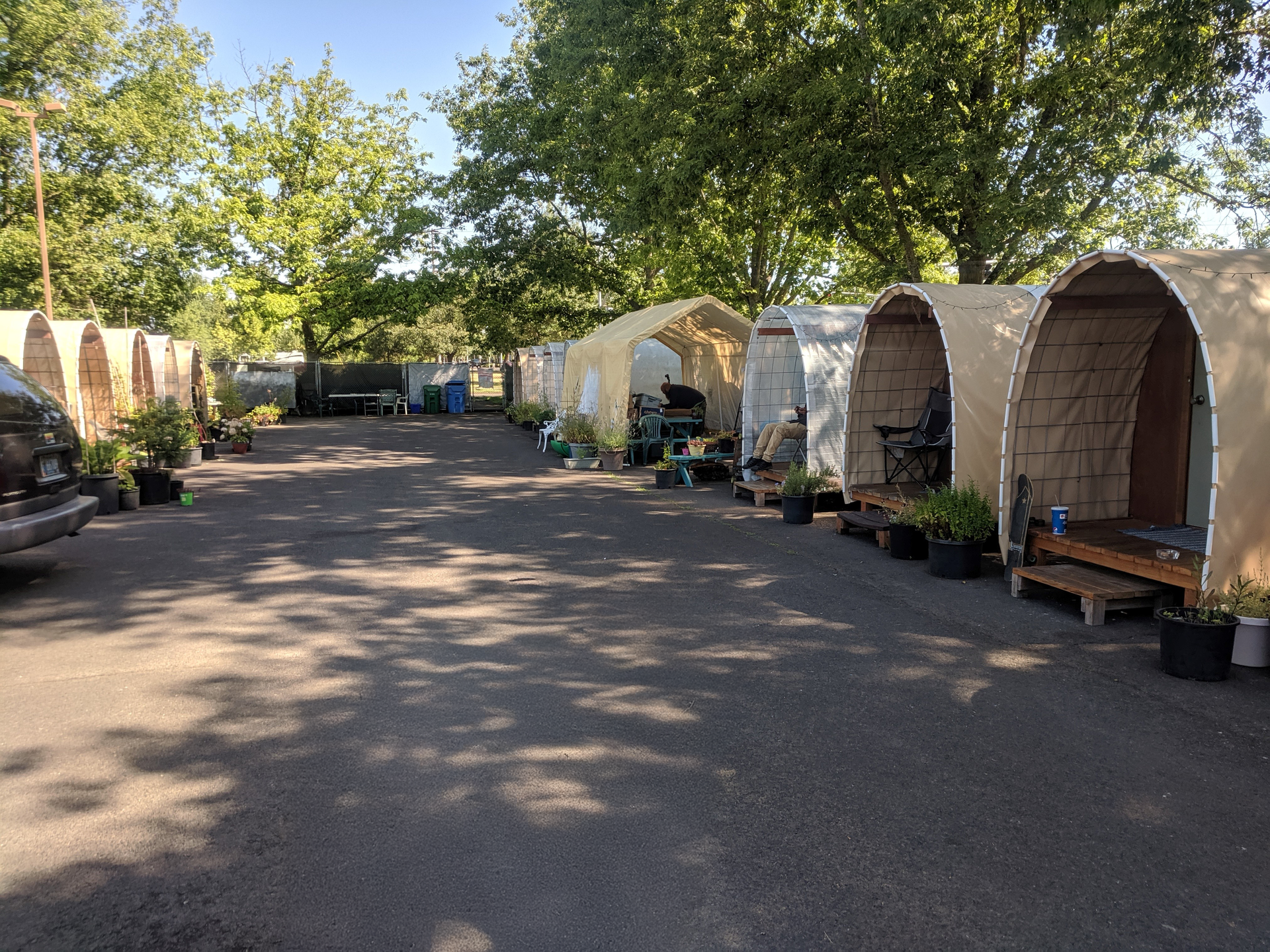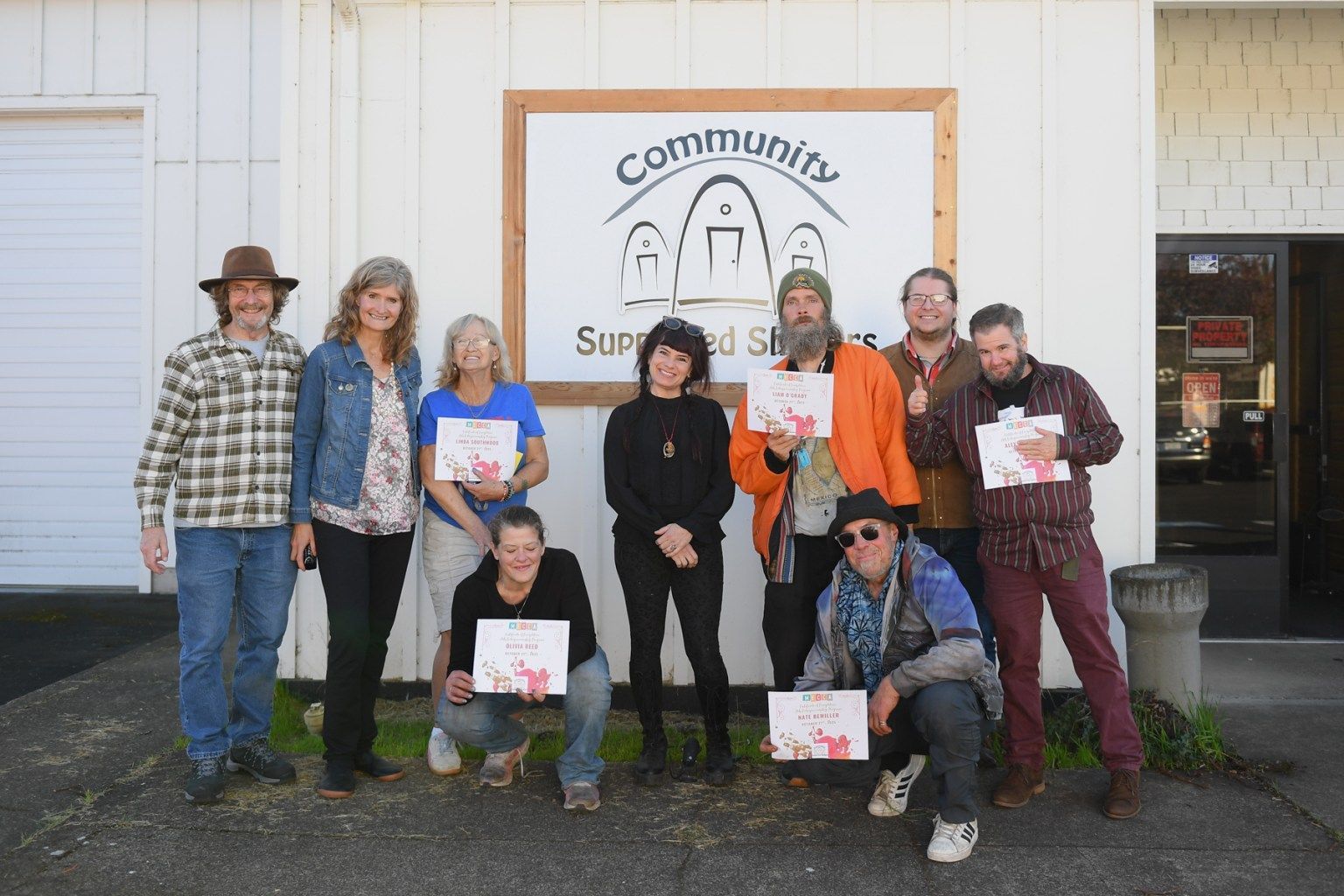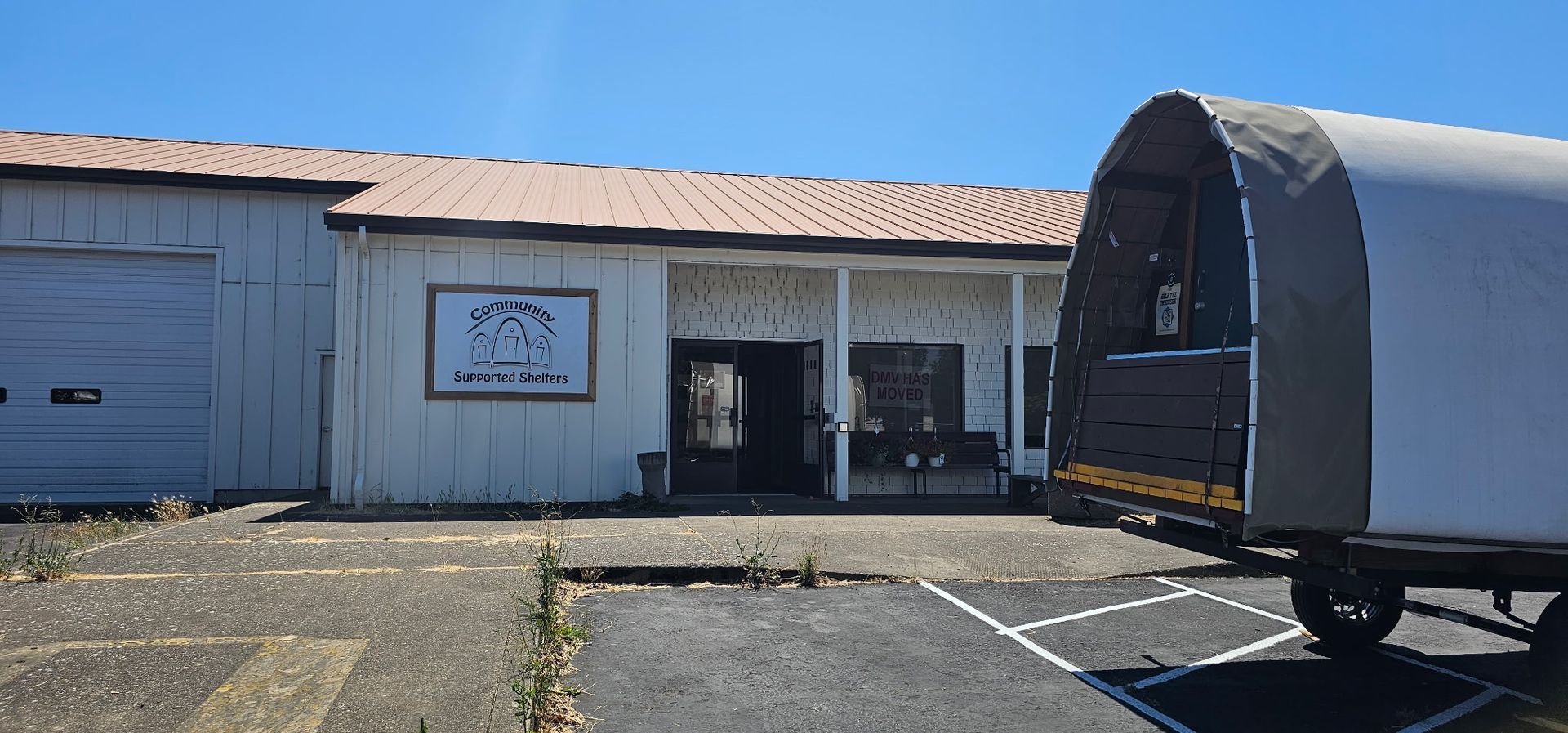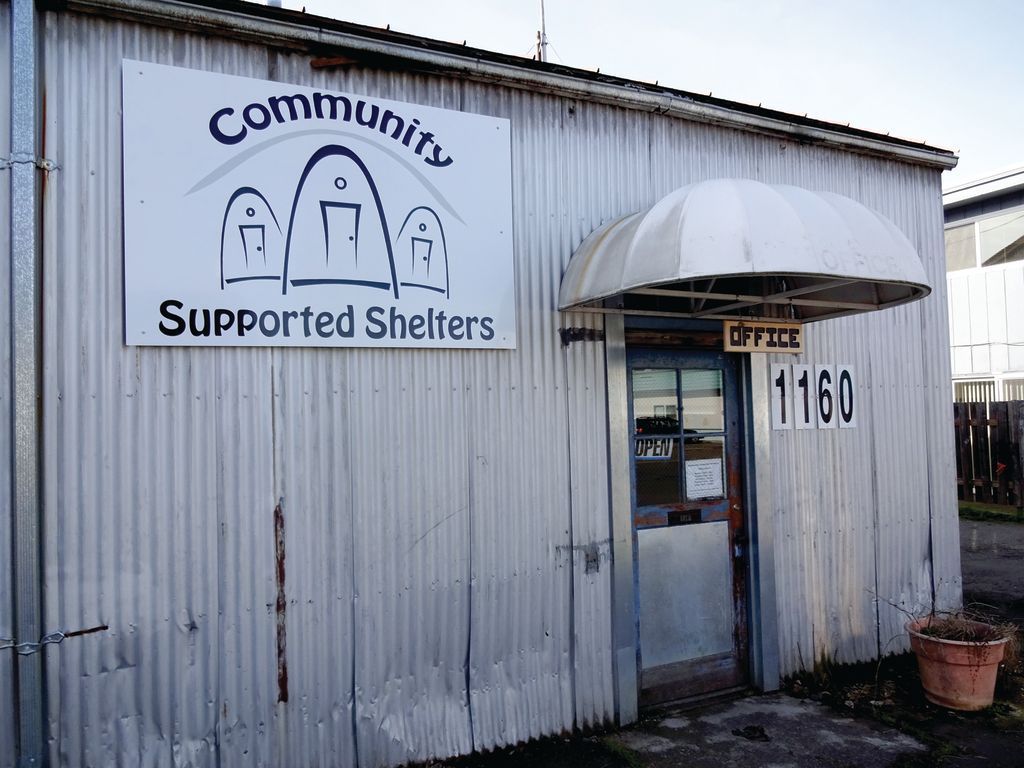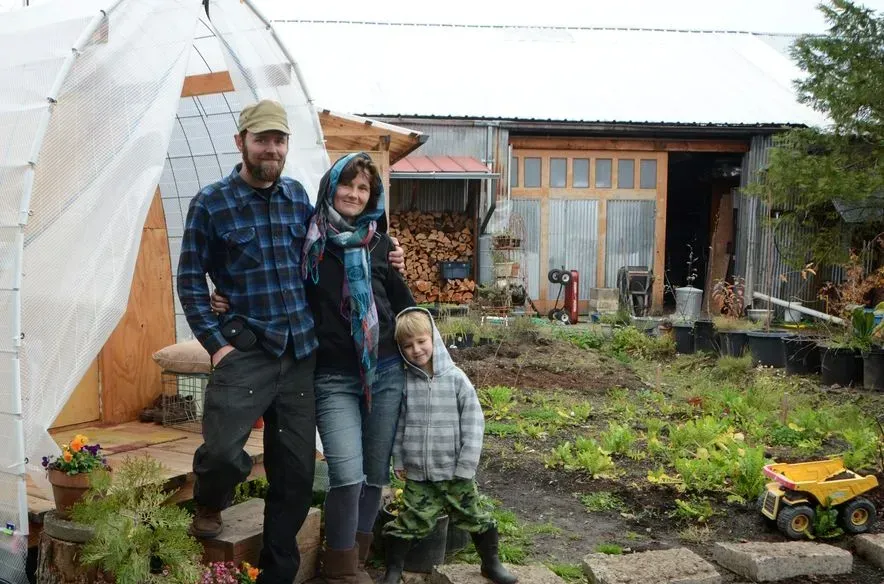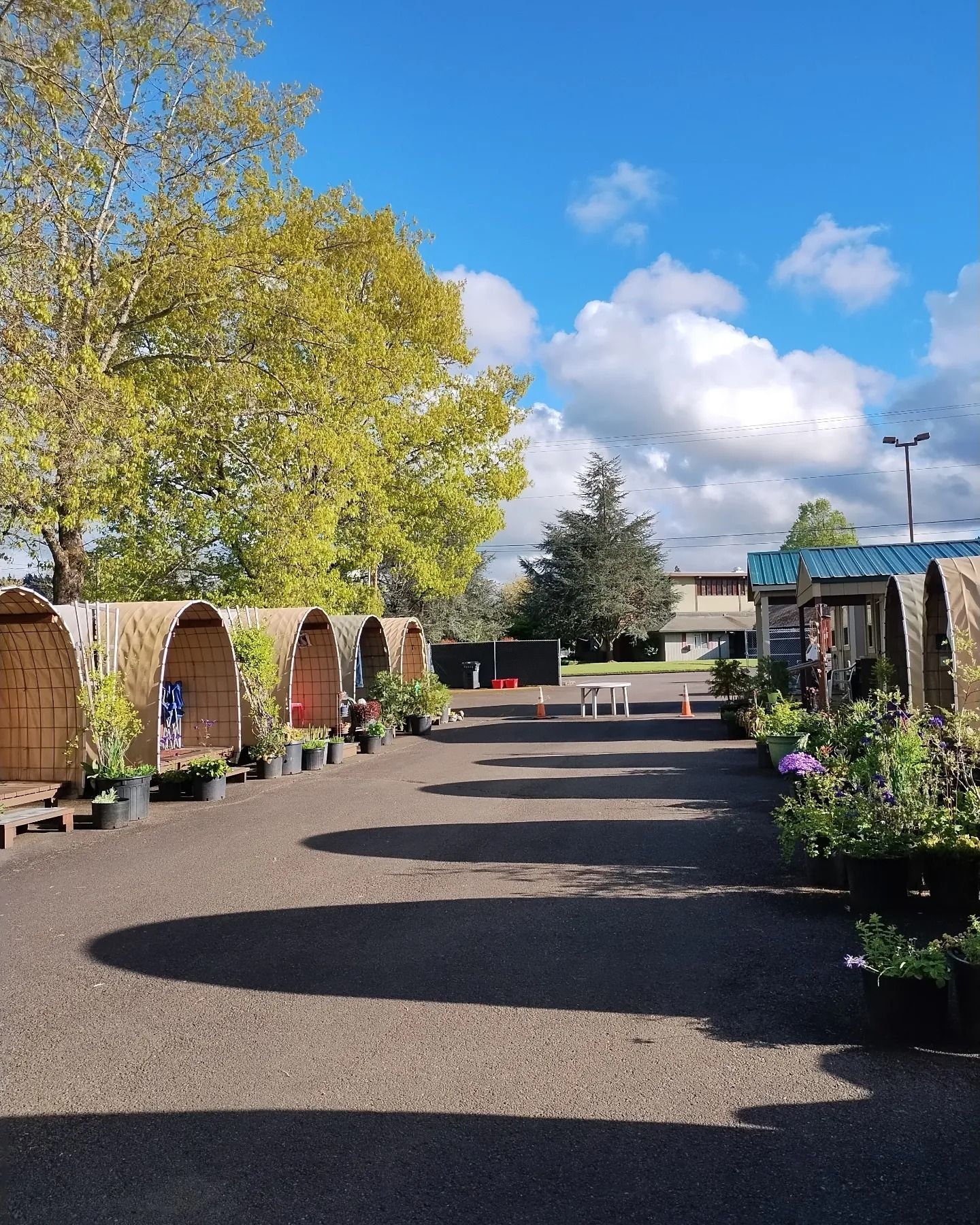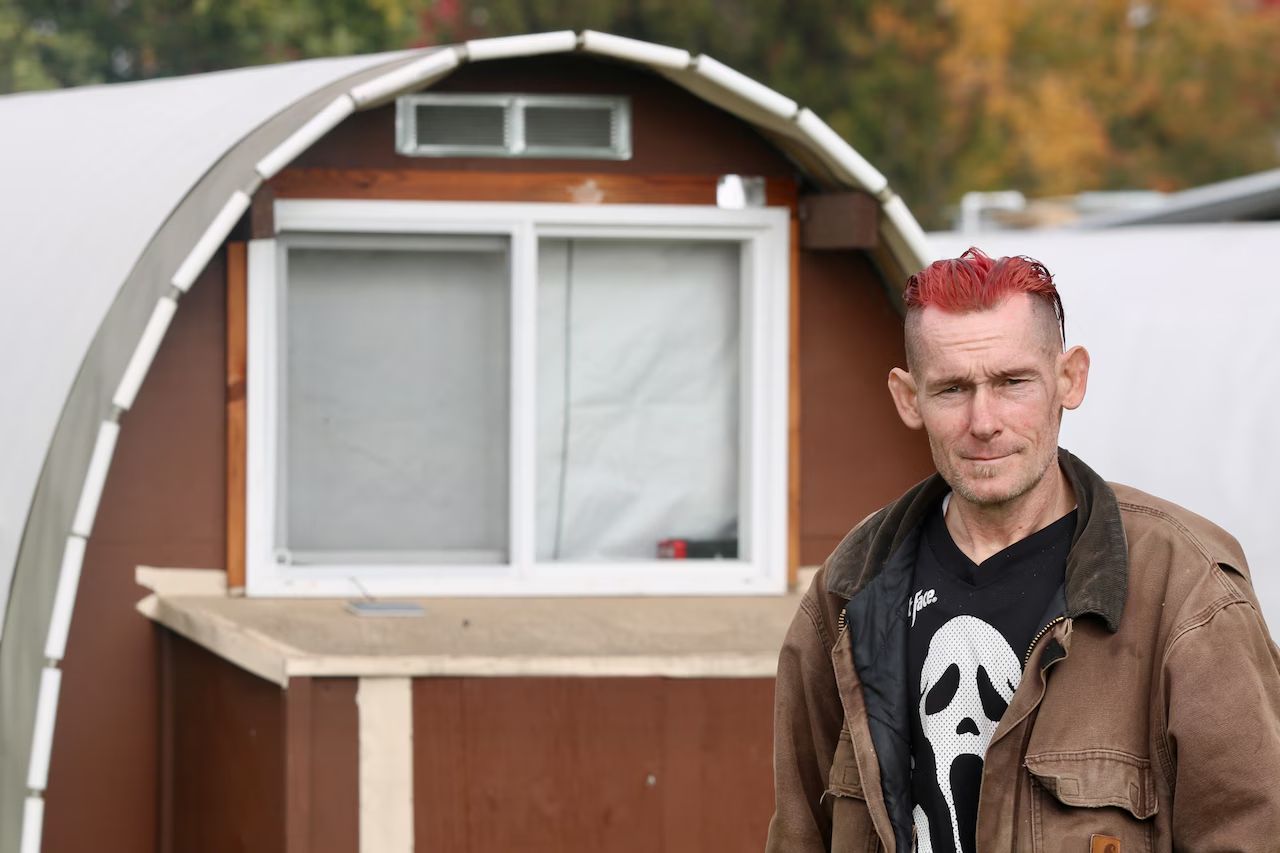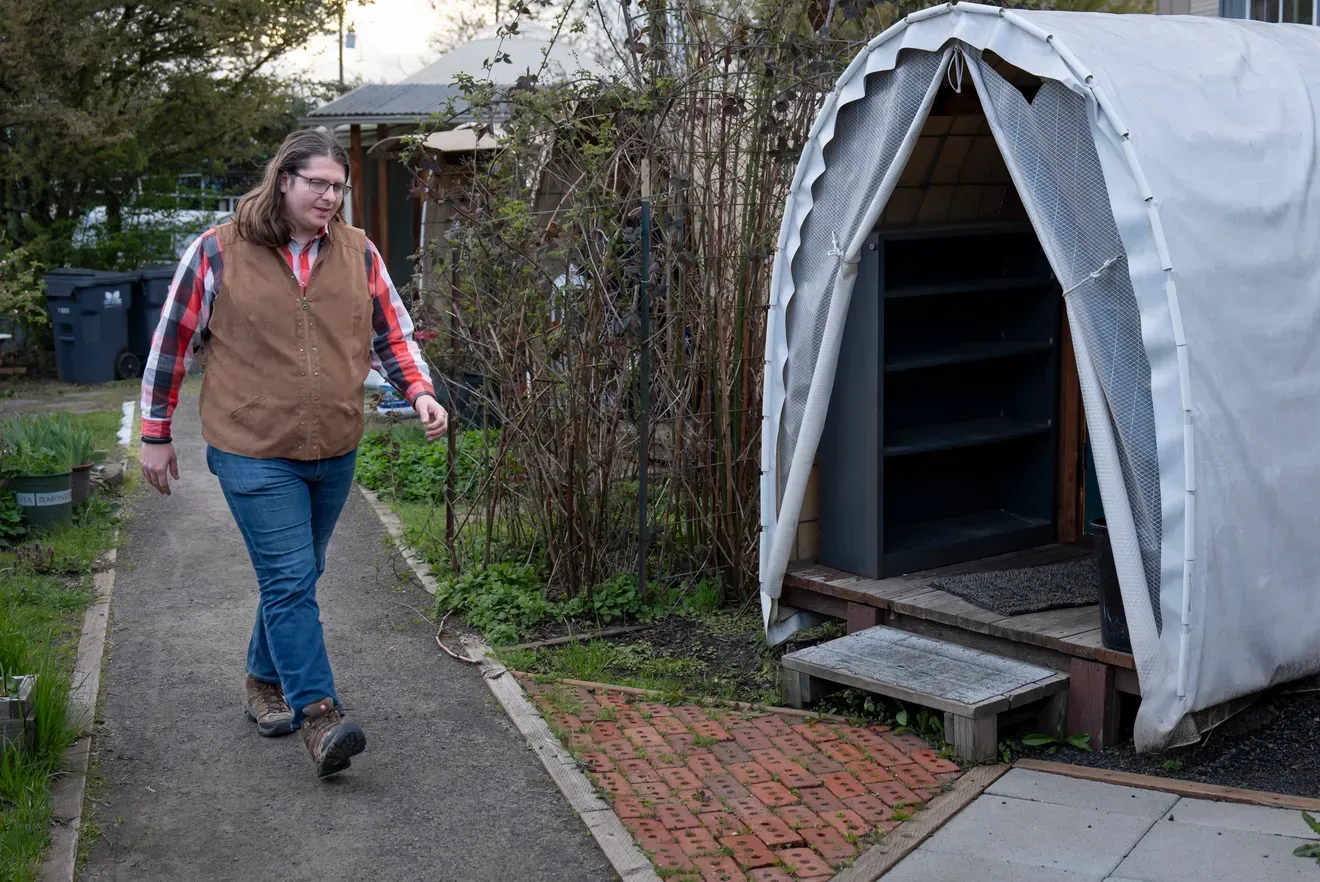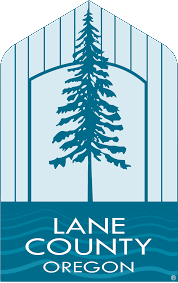Before the Huts: The Making of a Safe Spot
Feb. 25, 2021
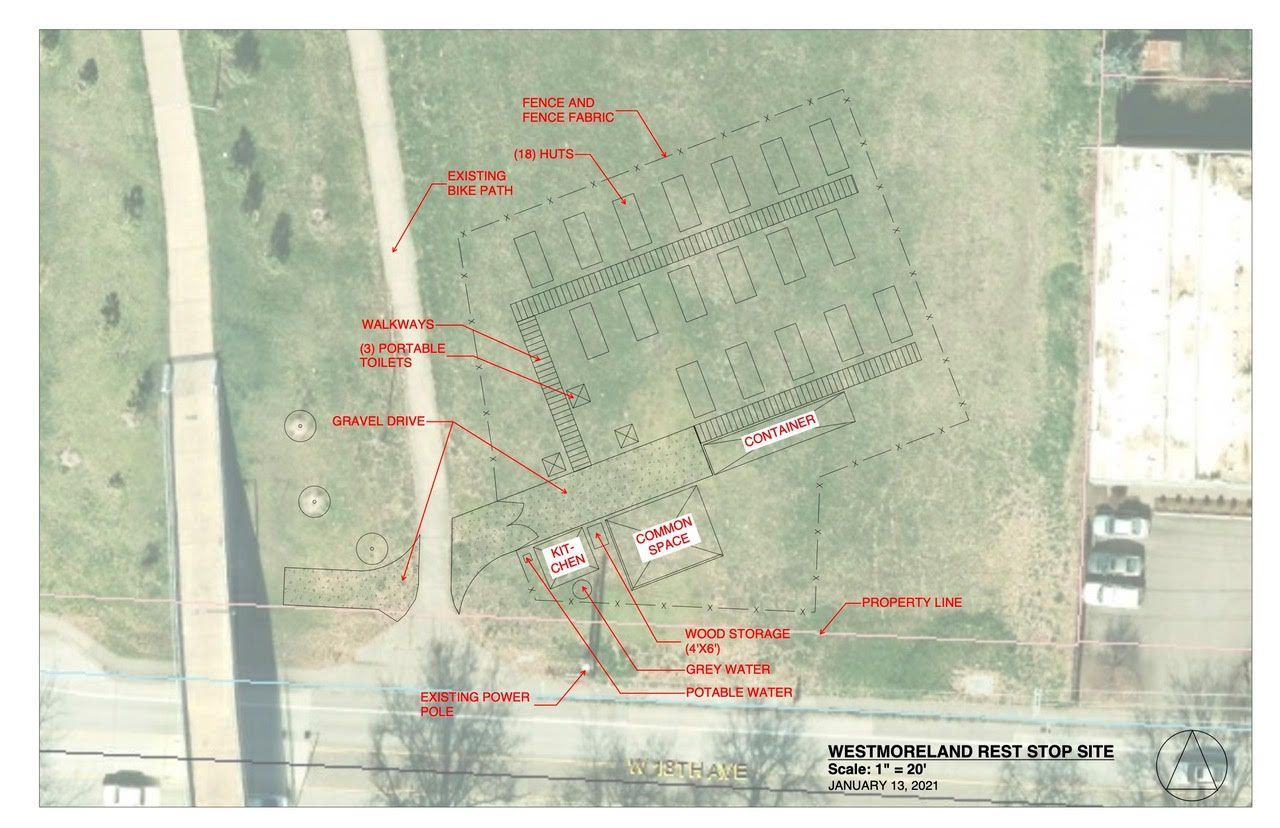
When Regan Watjus and Peter Chavannes from the City of Eugene went door-to-door in neighborhood outreach efforts around the five new Safe Spot locations, the conversations often took a turn when they mentioned Conestoga Huts. “When we made that connection, it would help people with what we were trying to explain,” Regan says—a change from just a few years ago. “It reaffirms the reputation and strong program that CSS has built.”Huts are the iconic symbol of Community Supported Shelters, and the arched roofs of new Huts are becoming increasingly visible throughout Eugene with the new camps stretching from West 18th Avenue to Highway 99.
But there is an awful lot that has to happen before any Huts can go up at any of the camps.
Site Selection:
Last summer, the City of Eugene sought to address the urgent need for more shelter for the homeless in the midst of a pandemic. Regan, who is the city’s liaison to the Rest Stop Program, and other staff members turned to the Public Works and Parks departments to look for city-owned property that would be suitable for new rest stops (the city’s term for CSS’s Safe Spots). Sites needed to be big enough, flat, and relatively dry, with good access to transportation, among other criteria. That process identified five new sites, which were approved by the city council fairly quickly. Urgency has driven this project from the start.
Soon after council approval, the city zeroed in on CSS to be the “operator” for these sites. “Taking into account the pandemic, the city—after assessing the capacities and capabilities of local vendors—found that CSS had both the experience and capacity to meet the short timeline and operational scale that the situation required,” Regan says.
Neighborhood outreach also happened after council approval, not the usual order of things, Regan says. Although they heard some objections, “We were a little surprised at how little resistance we received,” she says.
Site Plan:
City and CSS staff toured the sites to begin defining where the camps would sit within the sites. At that point, Erik de Buhr, CSS chief operating officer, focused on ensuring relatively easy access not only during the construction phase but also for the CSS service team members who work with clients and provide ongoing maintenance for the camp.
When the broad outlines of the camp took shape, Seth Kimmel, who was then CSS planning coordinator, sketched out basic site plans for placement of all the elements that go into a camp: a fence, a gravel access drive, a common building, a kitchen building, pathways, 14–18 Huts, and portable toilets. Erik gave Seth some guidelines. “You really want to have the Hut porches angled towards the southeast, if possible, otherwise they get a lot of direct element exposure from wind and rain. And you want to make sure that the common spaces have a south facing slope on the roof so the site is ready for a solar array in case we need to do it.”
Seth’s sketches guided development of the first two of the new camps. The footprint of Skinner City Farm had already been established as it had started as a Microsite with six Huts. Twelve Huts were added as part the city’s rest stop expansion. Lot 9, the second of the new Safe Spots, is in a graveled parking lot near Autzen stadium with lots of room, and the site plan was relatively straightforward.
Things began to get a little more complicated with the third site, Empire Pond, and CSS asked the city for more help navigating codes and land use regulations. “To meet the construction timeline, we knew we needed support from a city staff person to do the interdepartmental communications,” Erik says.
Marina Wrensch, who has a background in landscape architecture, became the latest team member on the city’s side for the rest stop sites. She worked from Seth’s original sketches, using Google Earth images and AutoCAD to develop more detailed site plans.
She says she approached the site plans for the new Safe Spots like she would any development. “There are code requirements for anything you want to build,” she says—things like avoiding wetlands and making sure fences are the proper distance from property lines. She has consulted with “lots of folks” in other city departments to make sure everything is in compliance. “My belief from the beginning was that we’re the city. We set the rules, so we need to follow our own rules as well.”
None of the new sites are officially considered wetlands, but most of them have “saturated soil,” potential for “awfully muddy” conditions that have to be considered when figuring out where to place the various elements within the overall site.
Site Layout 1:
Marina and CSS staffer Carmen Parkinson (who started out as a Hut Crew volunteer in 2019) use a 100-foot measuring tape, wood stakes, string, and white spray paint to first determine and mark where the fence and the access drive should go. Adjustments to the paper plan are made as they go. Google map images are somewhat distorted because they are not shot straight down and, as Carmen says, “It’s land and it has curves.”
Infrastructure:
Ideally, the access drives are done first, followed by the fences. Erik coodinates with subcontractors to get that work done. Access construction involves excavation and dumping and grading loads of gravel for the driveway and pads for the 22-foot X 28-foot common building, which will be used for meetings and other group activities, and a 12-foot X 12-foot “loafing shed,” which will house the kitchen. The fence around the 15,000 to 20,000 square foot camp area provides security as materials are moved onto the site and serves as a reference point for the next stage of layout. A portable toilet is also set up at this point.
Site Layout 2:
Marina and Carmen return with their tape measures and other tools to lay out the raised pathways and the Huts. Carmen places tall stakes where the plan calls for the ends of the three-foot wide paths and runs a taut string between them. She extends a 100-foot tape measure under the string and Marina marks with spray paint where the front corners of the Huts will go. Huts are six feet wide and at least six feet—ideally eight feet—apart. And no Huts can be closer than six feet from the fence. At Empire Park, the fence was not exactly as planned so they had to tighten the spacing between the Huts to the six feet distance.
Component Prep:
Meanwhile, back at the CSS shop, Construction Supervisor Barr Washburn is making sure that all the components and materials necessary to build Huts are ready. The five new Safe Spots will have a total of 86 Huts. The walls, floors, and decks for 70 Huts were fabricated by Essex Construction, the rest by CSS staffers. Volunteers and staff prepare the other components including roof materials, insulation, and steps. Barr and Carmen also coordinate getting all the components, materials, and tools to the Safe Spot sites—it takes an amazing number of pieces to put up a Hut—so the volunteer Hut Crews can assemble them.
CSS construction staffers are also building hand-washing stations and kitchen cabinets that will incorporate stoves, sinks, and an “island” prep area and will have stainless steel countertops.
News & Events
To stay connected to CSS, subscribe to our quarterly newsletter. If you are a member of the media who is seeking info, contact
community@cssoregon.org.
